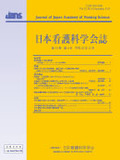Japanese
English
- 販売していません
- Abstract 文献概要
- 参考文献 Reference
要旨
目的:ソーシャル・サポートの質や量の少なさから怒りを喚起し攻撃行動に至る心理過程とその関連要因のモデルを仮定し,検証することを目的に,精神科看護師に対して質問紙調査を行った.
方法:怒りの表出過程とその関連要因との関連について因果モデルを作成し,構造方程式(パス図)を描き,共分散構造分析を実施した.因果モデルの検証には,モデル適合度指標を使用した.なお,質問紙は,ソーシャル・サポートやストレス,共感性など9種類の質問紙を使用した.
結果と結論:分析対象1,001名(最終有効回答率=70.0%)の回答を分析した結果,最も「あてはまりの良いモデル」は,GFI=0.94, AGFI=0.91, CFI=0.92, RMSEA=0.063であった.さらに,【ソーシャル・サポートが(少)ない→ストレス(人間関係および職場環境のストレス,仕事内容のストレス)が増加→怒り心理反応を喚起→攻撃行動】という過程が明らかになると同時に,その過程に影響を与える要因が示された.また,対象の看護師の男女比は1:3であり,男女間における多母集団同時分析によって性差についての検討も行った.その結果,一部の相関関係(共感性⇔仕事のストレス間,など)で性差がみられることが明らかになった.
Purpose: We conducted a survey of psychiatric nurses to verify a postulated model for the psychological process leading to anger and aggressive behavior due to poor and insufficient social and related factors.
Methods: The analysis was conducting by applying a causal model (postulated in my hypothesis) of confirmed validity explaining the relationship among the process of anger expression and the factors. Using this model, a structural equation (path diagram drawn using the causal model) was generated and path analysis was conducted by applying a structural equation model (SEM) and using the model's goodness-of-fit index. We also used nine different types of questionnaires, including questionnaires on social support, stress, and sympathy.
Results and Conclusion: On analyzing the answers of the 1,001 surveyed nurses (final response rate=70.0%), we observed that the results of the analysis indicated that the model best-fit occurred at the following parameters: GFI=0.94, AGFI=0.91, CFI=0.92, and RMSEA=0.063. Furthermore, it was revealed that the following model is the best fit for the process that leads to the expression of aggressive behavior and the factors that affect the process: inability to receive social support → accumulation of stress concerning the workplace environment, human relations at the workplace, and job contents → arousal of anger → expression of aggressive behavior. In addition, the results of multiple group analysis indicated clear gender differences regarding several factors, including a partial correlation between sympathy and job-related stress, etc.
Copyright © 2014, Japan Academy of Nursing Science. All rights reserved.


